Stay in the present 🙂 Content will be available when the time comes…
3 reasons to fall for Butternut Squash
You know carrots are a good source of vitamin A. Did you know butternut squash is another great source? Affordable, easily available and versitile are only a few reasons to “butter-up”.
1) Affordable:
Most groceries and farmer’s markets will have piles of squashes available from early fall into winter. Look for a deep tan color and smooth skin. Butternuts range in size from small enough for a single serving to large enough to make a huge pot of soup out of. This is one heavyweight that won’t break the bank. expect to pay $1 – $2 per pound even for organic.
2) Easily Available:
In the right environment, cool, dry, & dark, squashes can keep well for months. Think the bottom of closet or cabinet. Even your garage is the temperature there is appropriate (above freezing).
Having a butternut handy makes dinner planning easy.
3) Versatile:
Baked, Stewed or Steamed, butternuts cook quickly in 40 minutes or less. Bake squash halfs until tender and stuff with beans, other vegetables, or simply enjoy with dab of butter. Peeled and cut into 1 inch chunks, butternut will steam in about 15 minutes or so. From there the chunks can be tossed with black beans for a great salad or pureed into a creamy side dish. Perhaps my favorite way to prepare these tan beauties is stewed in coconut milk to create delicious Thai Green Curry such as the one in my eBook, “Recipes to Thai For“. (click the link to see the book)
More to Love:
With it’s bright orange flesh, butternut is loaded with beta-carotene that your body converts into vitamin A, more than 3,000 IU from only 1 cup! Why should you care? Vitamin A has been shown to ward off skin disorders, help prevent age related vision loss such as AMD, and even stave off leukemia. The combination of fiber and potassium can protect against heart disease and high blood pressure.
Low price, easy preperation, and high nutrition make butternut squash a winner all around!
MGH Tags: cleanse, skin
Seasonings Made Simple – Asian Fascination
Asian Fascination
Note: this is part 2 in a 4 part series – search tag “seasonings” to see all posts.
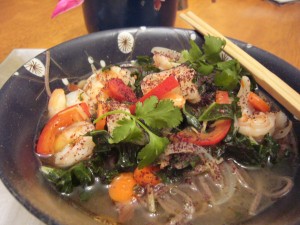
Asian Noodle Bowl ~ Shrimp & veggies over buckwheat noodles in broth.
Give your next dish an Asian flair with some of the extras listed below or go all out for an authentic tasting, fascinating looking meal by using these basics to inspire your favorites.
Color, texture, and a balance of flavors are what charaterize Asian cuisine and make it so fascinating to prepare and so incredible to sit down to enjoy.
The guide is organized into categories:
Oils: describes typical cooking medium best suited for flavor & typical cooking temperatures.
Sour: this important flavor (often missing in American cuisine) helps stimulate digestion & provide balance to a meal so your body gets the signal that it has been nourished. Add the sour component towards the end of cooking or just before serving to keep it bright & fresh.
Savory: Also known as spicy, boosts metabolisim and keeps things lively!
Herbs & Spices: These are the basics for each cuisine listed. Experiment with them. Generally spices are best added early in cooking & herbs toward the middle to keep their delicate flavor.
Extras: Who doesn’t love extras? Toss these goodies in to add sparkle!
Dairy: Used in moderation, dairy provides richness to your meals.
Nuts: Like extras, nuts add sparkle. They also boost the nutritional value of vegetable dishes by adding a source of protien.
Vegetables: These are classics found in listed cuisines. They will round out a meal and provide important vitamins, minerals, and fiber.
Grains: While rice is universal, quinoa (a high protein grain that is a staple of south american cultures) and buckwheat offer a great change of pace and will make your meal really stand out!
Here are specifics—
OILS: Peanut/Vegetable Oil Sesame Oil
SOUR: Rice Vinegar White Wine Lime Juice
SAUCES: Soy Sauce Fish Sauce Oyster Sauce Hosin Sauce
SAVORY: Ginger Garlic Crushed Red Pepper
HERBS & SPICES: Cilantro Allspice Five Spice Powder Dry Mustard
EXTRAS: Grated Coconut Water Chestnuts Bamboo Shoots Lemon Grass
Black Mushrooms Shitake Mushrooms
NUTS: Cashews Peanuts Sesame Seeds
VEGETABLES: Celery Snow peas Carrot Red Bell Pepper Broccoli Bok Choy
Green Onion Bean Sprouts Watercress Aduki Beans
GRAINS: Jasmine Rice Buckwheat Noodles Egg Noodles
SOME EXAMPLES:
Chicken with vegetables~Season a chicken breast with White Wine, Ground Ginger, and 5 Spice Powder. Grill or pan fry in small amount of Sesame Oil. Thinly Slice Bok Choy (or Napa Cabbage), Celery and shred some Carrot on a box grater and stir fry them all together with Some Garlic and Crushed Red Pepper.
Slice chicken breast into strips and serve over vegetables. Top with crushed Peanuts and minced Green Onion.
Asian Noodle Bowl (pictured above) ~Heat a small amount of Peanut Oil in a medium suacepan and sautee some minced fresh Ginger, Crushed Red Pepper, & chopped Onion, and diced Red Bell Pepper until soft. Add a cup of Chicken broth per serving and some water chestnuts. Cover and bring to a simmer, then add some sliced Shitake Mushrooms or SnowPeas. When ready to serve, add peeled shrimp and cook for just 2-3 minutes.
Place some cooked Buchwheat noodles (known as Soba) and fresh chopped Watercress in individual bowls and pour shrimp, vegetables and broth on top. Season with Rice Vinegar if desired and sprinkle with Seasame Seeds and a drizzle of dark Sesame Oil.
Beef with Broccoli ~ Cook thinly sliced Beef in small amount of oil with minced Fresh Garlic in a large skillet or Wok. Remove from pan and wipe any fat from pan with a paper towel. Add oil to the pan with some Crushed Red Pepper and stir fry steamed Broccoli until tender. Return Beef to the pan, reduce heat and season with Oyster Sauce and Soy Sauce to taste. Top with Sesame Seeds.
Wok on!
Organic or Not: The Dirty Dozen and The Clean Fifteen
The 12 Fruits and Vegetables Most Likely to Be Contaminated with Dangerous Pesticides
If you have limited availability of organics or are keeping a careful eye on foods costs, it pays to be aware of when choosing organics matters more and when it’s less critical.
Remember that eating conventionally-grown produce is far better than not eating fruits and vegetables at all.
Here then, are the Dirty Dozen to choose organic when you can:
- Apples
- Strawberries
- Grapes
- Celery
- Peaches
- Spinach
- Sweet bell peppers
- Nectarines (imported)
- Cucumbers
- Cherry tomatoes
- Snap peas (imported)
- Potatoes
And here are the Clean Fifteen least likely to harbor harmful chemical residues:
- Sweet potatoes
- Cauliflower
- Cantaloupe
- Grapefruit
- Eggplant
- Kiwi
- Papaya
- Mangoes
- Asparagus
- Onions
- Sweet peas – frozen
- Cabbage
- Pineapples
- Sweet corn
- Avocados
MGH Tags: Skin
Greek Avgolemono Soup
This soup is very popular in Greece. It is simply delicious in my opinion. Tempering the eggs in step 2 gives the soup a smooth and creamy texture.
Orzo is a Greek pasta shaped like rice. Any small shape will do just fine. For a Gluten Free version, use cooked rice. Very important, do not let the soup boil once the eggs have been added or it will curdle.
Ingredients:
7 1/2 Cups Chicken Stock (use high quality)
1/2 Cup Orzo Pasta
3 Eggs
Juice of 1 Large Lemon
Salt & ground Black Pepper
Lemon Slices to Garnish (optional)
Procedure:
1) Pour the stock into a large pan & bring to a boil. Add the pasta & cook for 5 minutes.
2) In a medium sized mixing bowl, beat the eggs until frothy, then add the lemon juice and a tablespoon of cold water. Slowly stir in one ladleful of the hot chicken stock, then add one or two more.
3) Remove the pan from the heat, add the egg mixture and stir well.
4) Season with salt & pepper & serve immediately, garnished with lemon slices.
What is The Confidence Diet?
When you eat with confidence, there is no need to count calories, or weigh portions. You will be eating real food that tastes great. You will get to eat more often. How much fun is that? You will look good and feel great. The health that you are meant to have will naturally blossom within you. Eating with confidence is about including more varieties of foods, not about making anything off limits. There is no deprivation. You choose what foods to include to support your goals. These habits make up a lifestyle that is worth striving for because it is a sustainable way to support your health.
A big part of the Confidence Diet is an awareness that your day to day experience is fully based on the way you think. As Henry Ford said, “if you think you can, you can”. If you think and believe that the regular practice of eating simple non-processed foods will make your health goals a reality, it will. If you accept that you are able to make a habit of healthy eating, you will adopt these habits. If you believe that you will get the same results as others who do this, then you will enjoy the benefits as well. In this regard, you must know in your heart and have confidence that you will succeed when you truly put your mind to eating with confidence.
Letting go of old habits can be a difficult and challenging process. We must understand what beliefs our habits are based upon. What thoughts underlie your beliefs? Where did they come from? Do you truly agree with these thoughts or do you simply accept them because they have been drilled into your head? In his book “Evolve Your Brain”, Joe Dispensa talks about thought patterns (neurons that fire together) that have become so “hard wired”, they simply happen on their own. Our challenge, Dispensa says, is to notice when these thoughts are occurring. When an old thought pattern is “running”, that is the time to break up that neural network by choosing a new thought. Ideally, the new thought would be one you wish to replace the old thought with. The directive here is to literally “think again”. In practice, any new thought will begin to break down the old network and it’s beliefs. “Neurons that no longer fire together, will no longer wire together”, says Dispensa.
It is the combination of knowledge about what good food choices are along with an awareness of the thoughts and feelings that lead us away from poor choices that sets The Confidence Diet apart. Each of us has our own personal conflicts when it comes to eating habits. Resolving these conflicts is the basis for building the confidence we need to stay on the path to great health.
The Confidence Diet is suitable for people with specific dietary needs. In fact the diet is even more important for diabetics, vegetarians, or people facing any particular chronic health issue. If you fall into this category, your body is telling you it needs careful attention.
There are no pre-packaged foods, liquid supplements, or pills you must buy or take. There are no required monthly fees. This is about supporting your body with real, whole food that is full of life energy. The only requirement is a commitment on your part to do your best in taking control of your own health by using a common sense approach. You can do this! You have the ability!
The fast pace of the modern world leaves many of us with little time or energy to prepare fresh food. Consequently, we often skip meals, or even worse, turn to “convenience” foods to handle the time crunch. As the demand for easy to fix meals has increased, the quality of these “foods” has decreased. Read the label of any typical product and see how many ingredients you recognize, let alone can pronounce. Grocery store shelves are stocked with soups, sauces, prepared food, and frozen meals that are loaded with salt, refined sugar and fat. While there is a movement towards reducing sodium, trans-fats, and high fructose corn syrup in processed foods, they are nonetheless processed and contain very little life energy when compared with unprocessed foods.
Smart shoppers have begun to recognize this, and some have turned to restaurants for better quality food. But many times the emphasis at these eateries is on entrees dominated by meat with a mere garnish of vegetables. There is a tendency toward rich, thick, sauces based on fat and sugar. This food sells because so many people are addicted to it. Such meals can leave a person with that heavy, stuffed feeling that we all know too well.
The Confidence Diet is about knowing that eating a variety of seasonal whole foods is the surest path to health. It is about having confidence that this a life long habit worth striving for. It is about having confidence in your own ability to create this habit.
It is is no surprise that the best food to support our health is food we prepare ourselves. With some basic kitchen skills, you can easily prepare nutritious, well rounded meals. The whole, fresh foods found around the outside edges of the grocery store are very economical when used wisely and can help you save money on your food bill. Eating these foods will also give you more energy, help you think more clearly, and look your best. In today’s world, people are becoming more and more aware of what they are eating. The old saying “You are What You Eat”, has never been more appropriate.
Visit the other posts on this blog and see if they sound like a good fit for you. When your ready, download one of the free reports so you can begin to learn how to have the health you deserve.
Yours in confidence,
Poached Fish with Tomato & Cumin
When Kathy came home all a glow with her latest cookbook tome, I confess that I rolled my eyes. Here was a book over 2 inches thick and 400 pages long. Will I ever really cook a significant portion of these recipes I asked myself? Nonetheless, “The Cooking of the Eastern Mediterranean” by Paula Wolfert has earned a permanent place on our shelf. Among the many recipes, one in particular has become a staple for us. A full menu including this dish is in my book “Mediterranean Diet Recipes for Weight Loss” on Amazon.
“Fish poached in cumin flavored tomato sauce” is described as a “simple, homespun dish for two that requires little time and only one skillet”. A key ingredient is Aleppo pepper. The Middle East is renowned for its spice bazaars were literally dozens of different ground peppers can be found. Aleppo pepper is course, gritty, dark red, earthy, and robust. The flavor is haunting. You may also see it sold under the name “Near East Pepper”. A suitable substitute can be made using three parts sweet Hungarian paprika and one part mildly hot crushed red pepper flakes.
Poaching fish is a foolproof method to make sure it comes out moist. In this dish fresh tomato is grated to form a poaching liquid. Celery and onion give the sauce body and texture. The recipe works best with mild, white fleshed fish. I have used its sole with outstanding results, though it is rarely available. Readily available and very affordable, tilapia has become the fish I rely on when preparing this dish.
The recipe is below. You can find this dish as part of a complete fabulous Mediterranean Menu in my book on Amazon, “Mediterranean Diet Recipes“.
POACHED FISH IN CUMIN-FLAVORED TOMATO SAUCE
Serves 2 (double or triple quantities as needed)
2 6-Oz. white-fleshed Fish Fillets
Sea Salt
1 Onion (large)
1 Celery Rib
1 Clove Garlic
1 tsp Olive Oil
1/2 tsp Ground Cumin
Pinch of Aleppo Pepper
1 Ripe Tomato (grated) – Discard skin
Pinch Salt
Freshly Ground Black Pepper to taste
Chopped Fresh Parsley for garnish
1) Rinse the fish, pat dry with paper towels, and sprinkle with sea salt. Let stand for 1 hour.
2) Meanwhile, peel and thinly slice the onion, celery, and garlic and gently steam with the olive oil in a covered skillet 2-3 minutes.
3) Cut the tomato in half and gently rub cut side against the box grater on to a small plate. The skin will pull back and can be discarded. The remaining pulp is to be used in the recipe.
4) Add the cumin and red pepper and cook, stirring, 1 minute longer. Add the tomato and 1/3 cup water and bring to a boil. Add a pinch of salt and black pepper to taste and cook, stirring, 1 minute.
3) Slip the fillets into the simmering sauce (if using very thin fillets such as Sole, fold each fillet in half), cover, and cook over medium-low heat 4-6 minutes, or until the fish is done(the time varies with the thickness of the filet). Transfer the fish to a shallow serving dish. Boil the pan juices to reduce to a thick consistency. Pour over the fish and let stand until ready to serve. Serve warm with parsley sprinkled on top.
Poached Fish with Dandelion Greens
Spring Cleansing can help us release the excesses of winter eating habits.
Bitter flavor is important to include in our diets, especially in the springtime as we cleanse our bodies from winter excesses.
Dandelion Greens fit the bill perfectly. Here they are simply glazed and paired with a spicy glazed fish fillet. See a cooking demo here: https://youtu.be/vFQIx4EexXU
Indian Chicken Curry
Are you craving curry? Indian cuisine can be addictive. The good news is that it is easy to make at home. A key technique in Indian cooking is to fry the spices to release their essence before adding the food ingredients. This demo shows step by step how to make a delicious chicken curry.
You will find more fantastic Indian recipes in my book “Inspirational Indian Recipes” available on Amazon.
MGH Tags:
Food Labels de-Mystified! Free Report…
Do you want to avoid food ingredients that can drain your energy, cause possible allergic reactions, or potentially lead to chronic illness? When you read a food label does the ingredient list look like something out of a science textbook?
You need to know how to decipher the code! You want to know what these claims really mean so you can make an educated choice about whether you will eat this foods. Once you know how not to be misled, you can move toward choices that will better support your health and well being.
Use this form to get your Free Copy of
Food Labelsde-Mystified!
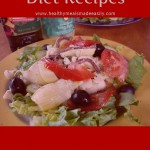 Mediterranean Diet Recipes
Mediterranean Diet Recipes Categories:
Categories:  Tags:
Tags: 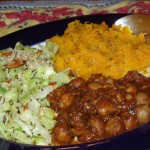
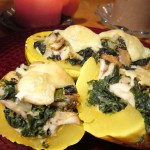
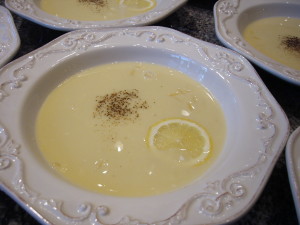

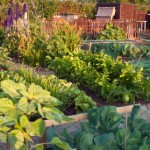

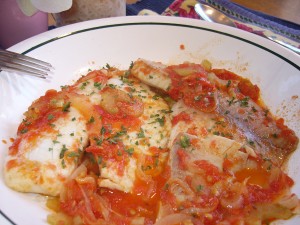
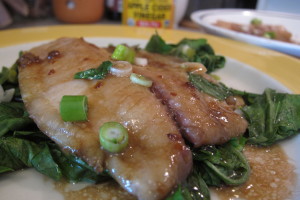
Recent Comments